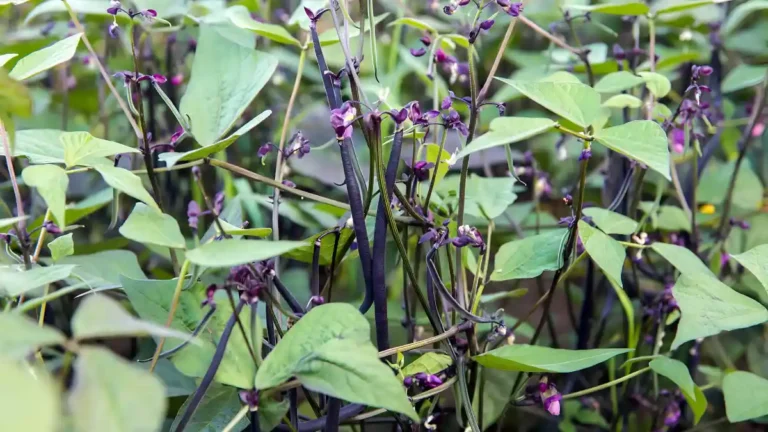If you have limited garden space, growing long beans in containers at home is a simple and satisfying way to enjoy this tasty and nutritious food. These climbers, often called yard-long beans or Chinese long beans, yield elongated pods that give your homegrown produce a distinctive look. You may successfully plant it in containers by following simple procedures.
Here’s an easy guide on how to cultivate long beans in containers at home:
Supplies and Equipment:
- Containers
- Long Bean Seeds
- Blending Blend
- Assisting Frameworks
- Watering Can or Hose
- Fertilizer
- Sunlight
Procedures for cultivating long beans in containers:
- If you want a hardy, trailing bean, go for a runner bean. Because they climb and trail like vines, runner beans are also known as pole beans. You’ll need to utilize supports like stakes or a trellis because they do grow tall. Due to their high rate of vertical growth, any of these well-known cultivars are excellent for growing in pots: Blue Lake, Kentucky Wonder, Algarve, Golden Gate
- Soak its seeds in water for a full day to start. This initiates the process of germination and helps to soften the seed coat.
- The potting mix should be added to the containers, leaving 1-2 inches of space above the top.
- Once the seeds have been incubated for seven days, mix the compost. Utilize a ratio of 60% soil, 20% compost, and 20% rice husks in the growing containers (here, salvaged buckets).
- After planting, give the earth a good irrigation. Continue to irrigate the soil, but do not allow it to become too wet.
- To provide the climbing vines support, install stakes or trellises inside the pots.
- The containers should be placed where they will receive at least 6 to 8 hours of sunlight per day.

- Use a soil mix rich in organic compost or a balanced fertilizer after planting the seedlings in the buckets to supply nutrients. This is the initial act of fertilization.
- To improve soil nutrition, fertilize the plants with a mixture of kitchen trash and vermicompost after about 25 days from the initial fertilization.
- To maintain plant development and sustenance, add watermelon waste to each bucket about 25 days after the second fertilizing and top it up with additional compost.
- When it reaches a length of 12 to 18 inches, they are ready to be harvested. Regular harvesting will promote ongoing output.
- For optimal freshness, keep collected it refrigerated and use them within a week.
Long beans, unlike other beans, continue to grow aggressively if plucked daily, causing the plant to produce additional blooms and pods. Furthermore, they flourish in hot, humid climates and tolerate poor soil better than many other legumes, making them a good choice for low-maintenance gardening.
Conclusion:
Fresh vegetables grown in your backyard are something you can enjoy even in small places because of container gardening’s adaptability. You will experience the fulfillment that comes with raising plants from seed to harvest as your long bean plants rise and flourish in the small space of a container.
A frequently asked questions:
Q1: How big of a container do you need to grow beans?
A1: To grow beans in containers, use a pot that is at least 12 inches deep and 12-18 inches wide to allow for optimum root development. Pole beans, such as long beans, benefit from a bigger container (at least 5 gallons) and a stout trellis for support.
Q2: How long does it take to grow long beans?
A2: Long beans usually require 60 to 75 days from sowing to harvest. They grow swiftly in warm circumstances and begin producing pods about 45 to 50 days after germination.
Q3: Are long beans the same as green beans?
A3: Long beans, often known as yardlong or asparagus beans, are not the same as green beans. While both are legumes, long beans have thinner, more flexible pods that can grow up to 18 inches, while green beans are shorter, thicker, and more stiff.
Q4: What kind of soil works well for container gardening with yard-long beans?
A4: For best results when growing yard-long beans in containers, use a potting mix that drains well and has a combination of perlite and compost. Make sure there is adequate airflow to encourage strong root growth.
Q5: What is the best fertilizer for long beans?
A5: The ideal fertilizer for long beans is a balanced or slightly lower-nitrogen fertilizer, such as 10-10-10 or 5-10-10, which promotes pod formation over excessive leaf growth. Adding compost or organic materials boosts soil fertility and promotes healthy development.

